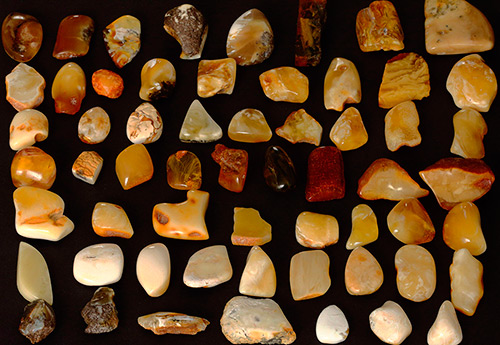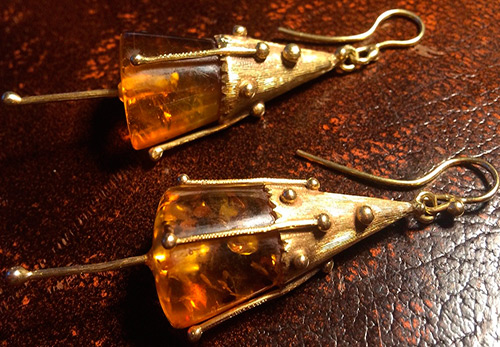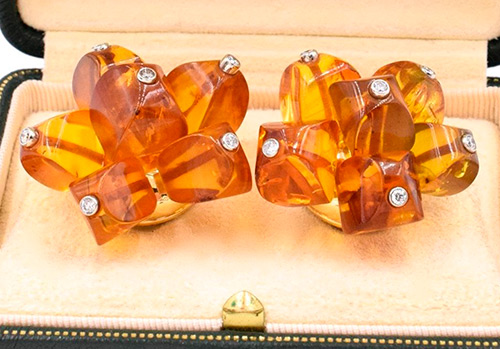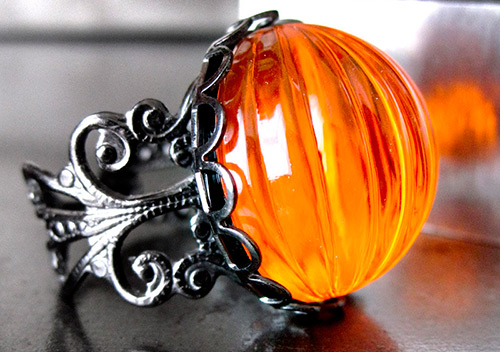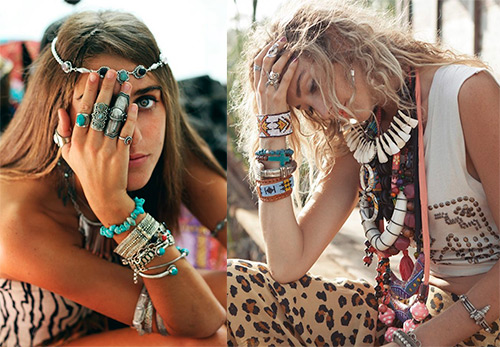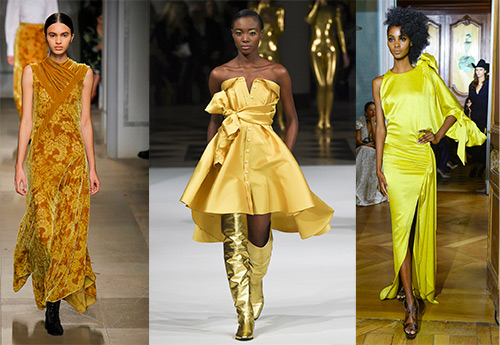Jewelry
Amber jewelry
Amber is a fossil resin. Amber is golden, matte and transparent, combustible, capable of electrifying during friction. But this is not all said about amber. He is beautiful, delightful, he is a symbol of happiness and health.
There are up to 350 shades of amber - almost from white and light yellow to red-brown and almost black.
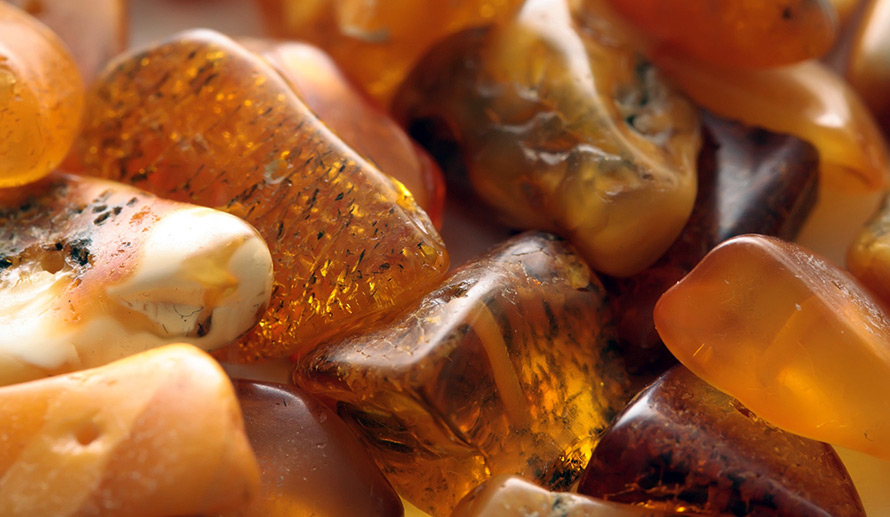
The first mention of amber dates back to the 10th century BC. - amulets, beads, plates and pieces of unprocessed amber have been found more than once in the burials and in the camps of ancient people. Poetic descriptions of amber are found in Homer, Plato, Hippocrates, Sophocles, Aeschylus.
Amber processing workshops have been known since the beginning of the Bronze Age. The XII-XIII century workshop was discovered during excavations on the territory of the Mikhailovsky Monastery in Kiev. Apparently, here on the Dnieper there were also deposits of this amazing resin. Amber processing reached its highest level in the 17th - 18th centuries. It was at this time that the staff of Patriarch Filaret and the famous Amber Room of the Catherine Palace in Tsarskoe Selo were made.
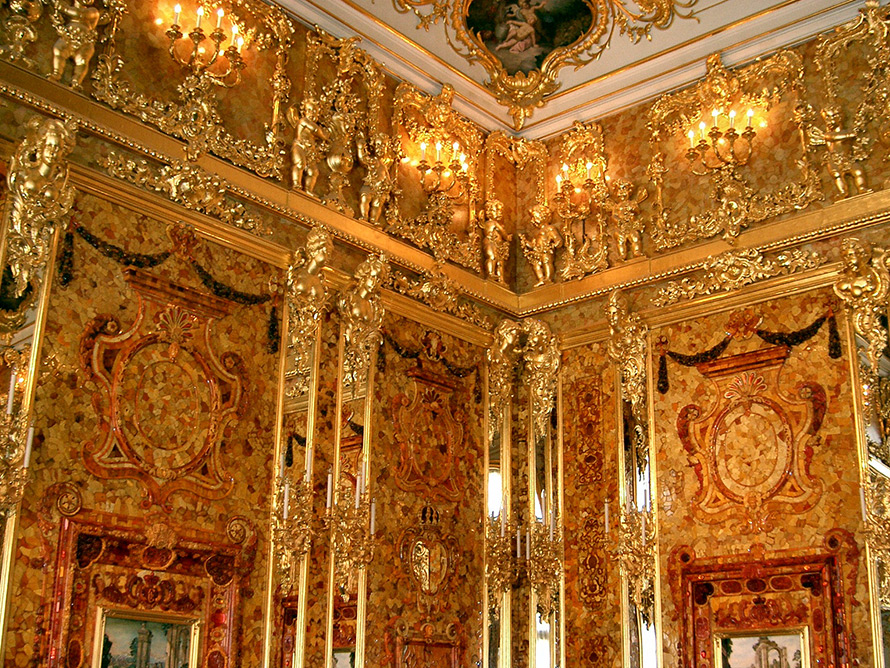
the Amber Room
In Moscow, the Armory contains wonderful amber items: cups, candlesticks, vases, bowls, mugs, wine glasses, etc. The largest collection of unprocessed amber of various colors and products from it is kept in the museum room of the Kaliningrad Amber Combine.
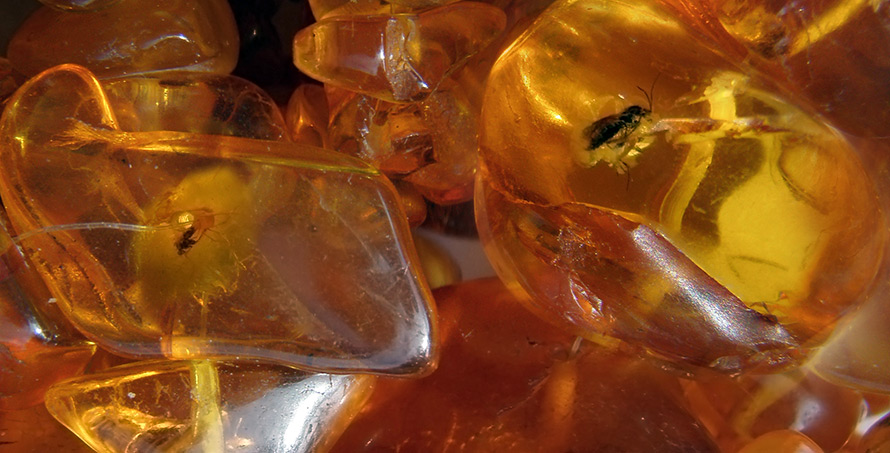
The largest amber museum was opened in 1979 in Kaliningrad. Here are presented unique items made of amber and copies of items stored in the Armory, the Hermitage, in the Catherine Palace in Pushkin (Tsarskoe Selo), in Berlin, Gdansk, Stockholm.
Amber was formed during the evolution of the Earth's vegetation. Therefore, it will not be surprising to hear such names as pine, cypress and other genetic types of amber. Scientists assume that a sharp warming on Earth has caused an increased resin separation of amber-bearing conifers. The gum (resin) hardened for hundreds of years, the properties, color changed, and deposits were formed. The shape and texture of amber depends on the conditions for the release of resin from trees. The most common sizes of amber are from 1mm to the size of a goose egg. However, there are also unique sizes, weighing more than 1 kg.
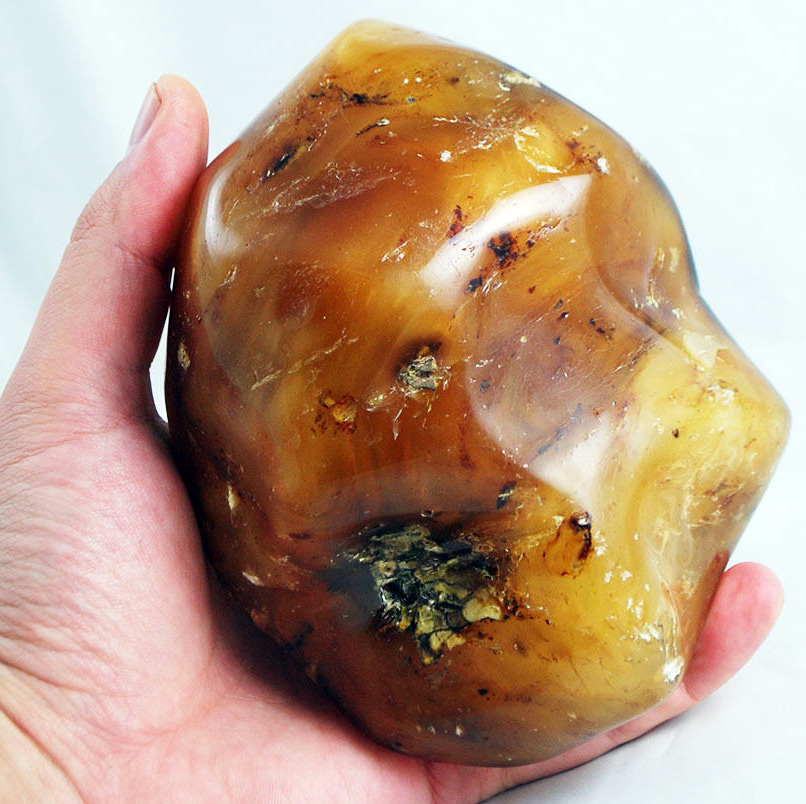
Samples weighing more than 4 kg are stored in the museum of the Kaliningrad Amber Combine. In the Lviv region, pieces were found, reaching 6 kg. On the basis of various physical and physicochemical properties, amber is divided into types. For example, Baltic amber is divided into six types, among which the most common is succinite, the rest are rare or even very rare species.
Amber is also divided according to the degree of transparency: transparent, translucent and opaque. Of course, different types of amber differ in color. For example, Baltic succinite amber can be golden, honey-yellow, orange, reddish-brown, sometimes even almost black, white (bone and foamy).
Amber often contains inclusions of various insects, bird feathers, gas and gas-liquid inclusions. Amber with inclusions of air and water bubbles is not highly valued.
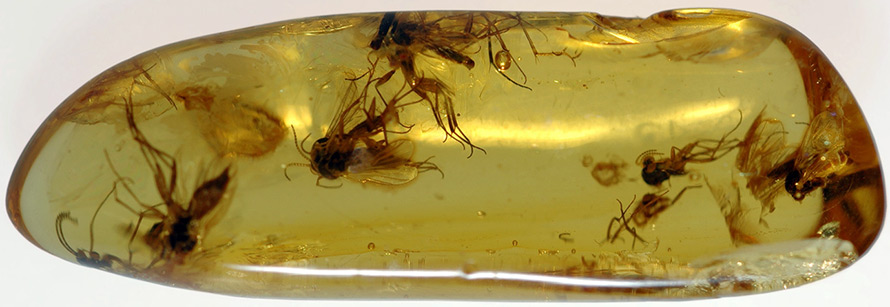
By adding dyes under a special pressure regime, it is possible to obtain products of different structure and shades. Only a small part of the amber mined is used in jewelry. These are usually large finds. The rest, which makes up about 90% of the production, goes to pressing and chemical processing. Pressed amber, along with natural amber, is also used in jewelry production.
There are imitations of amber - bakelite, bernat, etc. Amber differs from them in its lower density and blue luminescence in ultraviolet rays.
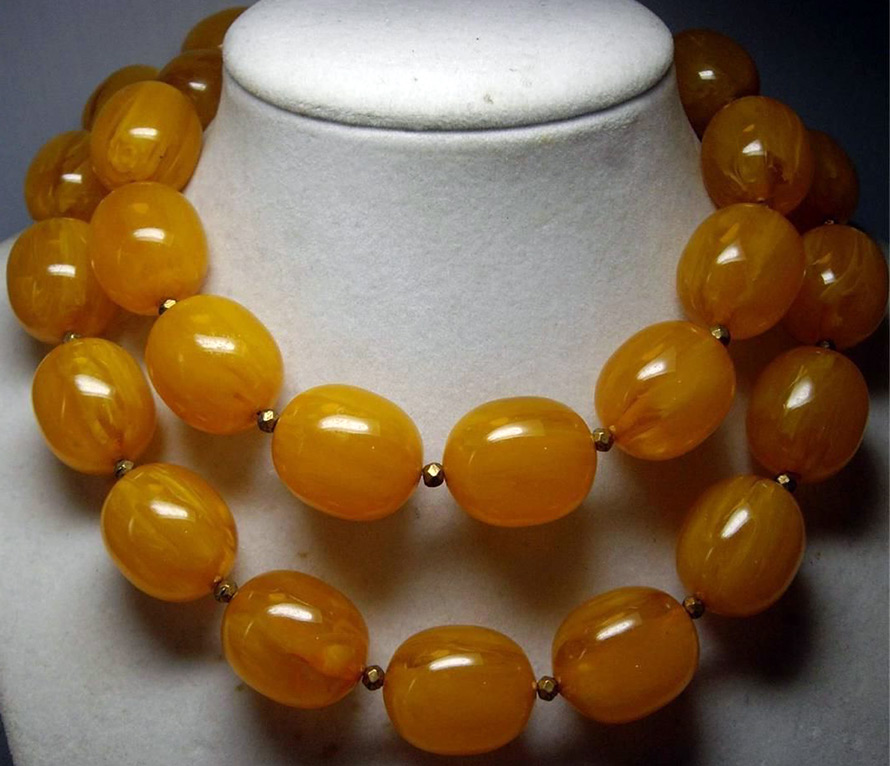
The world's largest amber mining and processing center is the Kaliningrad Amber Combine. The masters of the plant create unique products, combining amber with silver, gold, ivory, enamel, wood, precious stones. Different amber is used for jewelry - polished and unprocessed, of the correct and fancy shape.
Modern jewelry with amber is often combined with silver. Amber jewelry looks especially luxurious in summer and autumn. With its shades, it matches the crimson patterns that are blazing in nature at this time. Gold tones of amber look good against brown, green, blue, orange and gray tones.
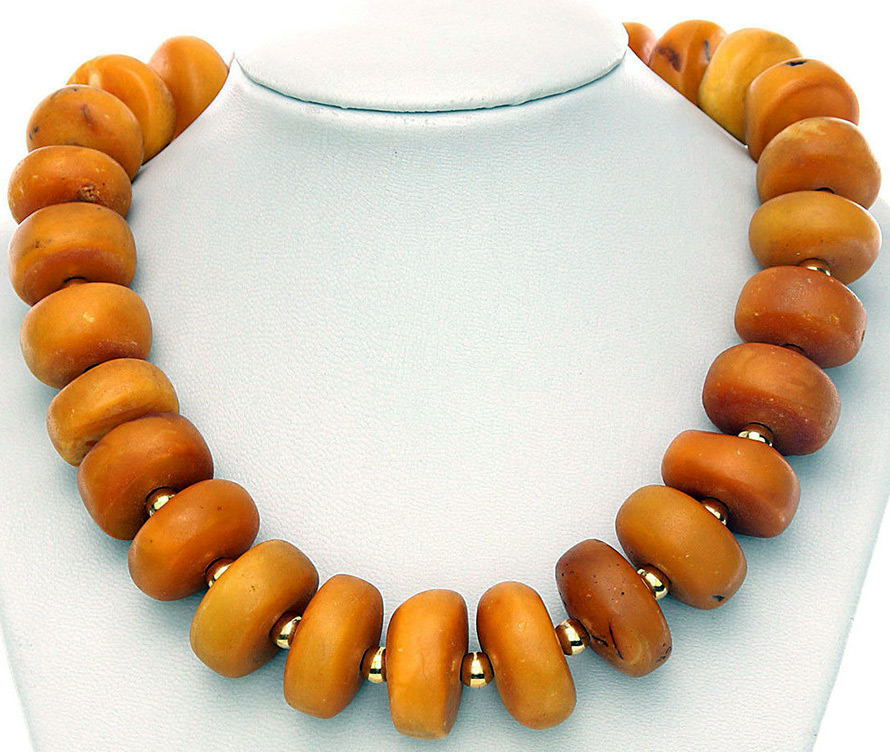
Amber goes well with leopard print, with products from tortoiseshell and bakelite. Try this combination - a turquoise silk or satin dress, amber earrings and bracelet, gold chain, light beige sandals and a bronze evening bag.

The healing properties of amber have been known since antiquity. And this is not surprising. The resin contains inclusions of various minerals and their compounds. These properties are known not only in folk medicine, but also in modern medicine, where amber is actively used in the treatment of various diseases. There are many examples. Here are at least a few of them.
Amber helps with headaches, softens the effects of pressure drops, magnetic storms. It has a beneficial effect on blood, lymph, tissue fluid, helps with varicose veins, joint diseases. Amber promotes the inhibition of pathological cell division, and this, in turn, leads to the death of harmful cells and resorption of tumors.
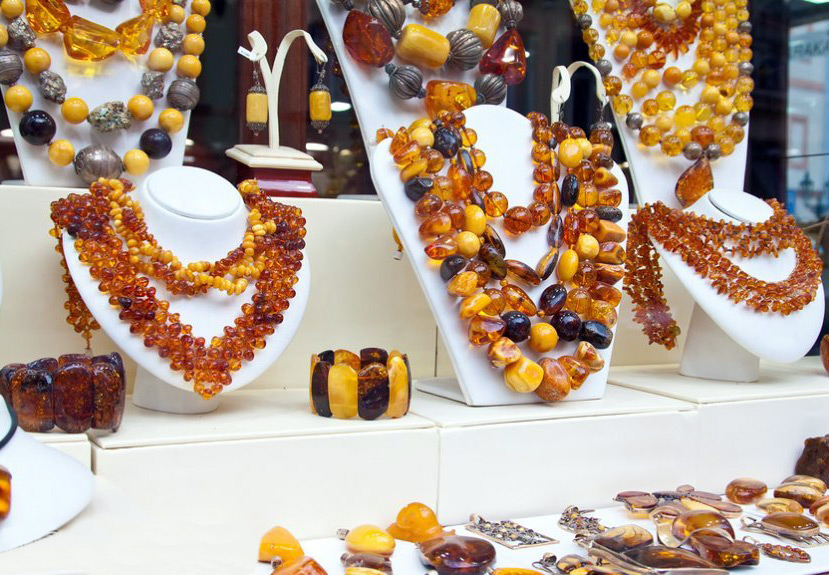
Amber contains iodine, and therefore amber beads should be worn for the prevention and even treatment of thyroid diseases that occur with a lack of iodine. Amber contains elements such as iron, calcium, magnesium, zinc, succinic acid salts, etc., which activate metabolism. Amber chips are used to make some valuable preparations.
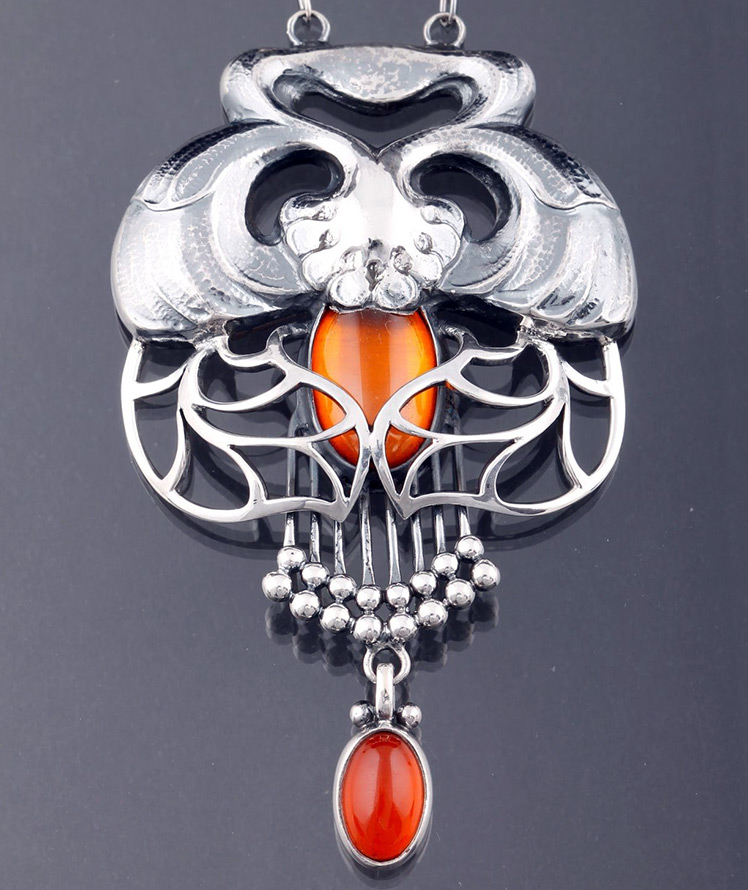
Amber is a source of creative powers, brings good luck, joy and peace. Wear amber jewelry and be happy.

Comments and Reviews
Add a comment
Rating news
Shades of clothing that make women look younger
What shades of hair make women younger: rules and photos
Funny wedding dresses - photos and ideas
12 most expensive down jackets for the winter
How to look 25 at 40: tips from supermodels
Beautiful schoolgirls
Anti-aging haircuts and hairstyles for women
Fashionable skirts for autumn and winter
Fashionable women's trousers for the cold season
Fashionable and stylish sandals for summer 2024
Spring-summer 2024
 Fashionable dresses and tops with thin spaghetti straps
Fashionable dresses and tops with thin spaghetti straps
 Bandana tops: how to wear stylishly and beautifully
Bandana tops: how to wear stylishly and beautifully
 How to put together the perfect men's wardrobe for the summer
How to put together the perfect men's wardrobe for the summer
 Fashionable shorts for spring-summer 2024
Fashionable shorts for spring-summer 2024
 Fashionable skirts for spring-summer 2024: a guide to online shopping
Fashionable skirts for spring-summer 2024: a guide to online shopping
 The most fashionable dresses spring-summer 2024: styles and colors
The most fashionable dresses spring-summer 2024: styles and colors
 Fashionable total look 2024: ideas of images and trends
Fashionable total look 2024: ideas of images and trends
